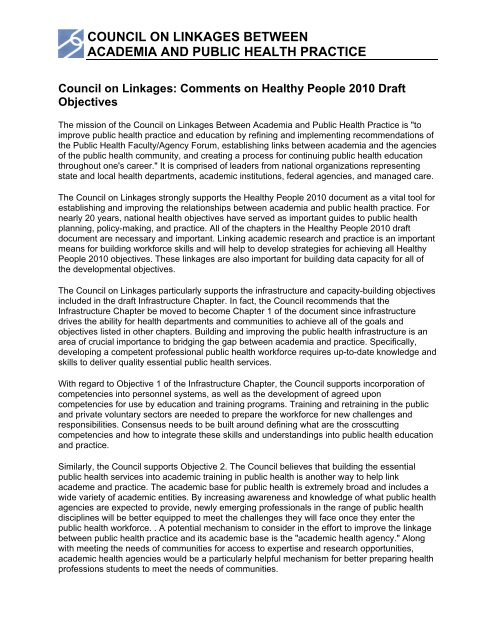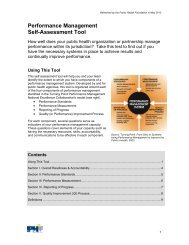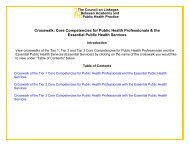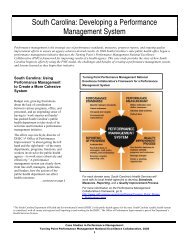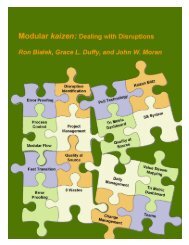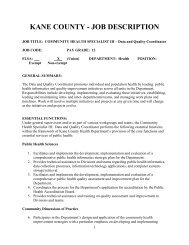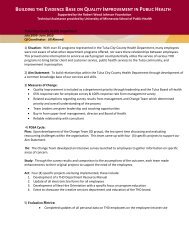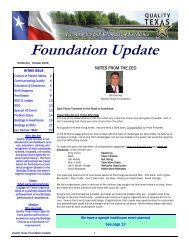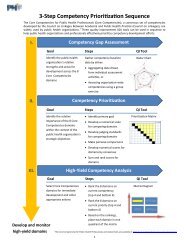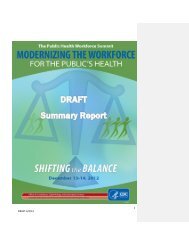Download this File - Public Health Foundation
Download this File - Public Health Foundation
Download this File - Public Health Foundation
You also want an ePaper? Increase the reach of your titles
YUMPU automatically turns print PDFs into web optimized ePapers that Google loves.
COUNCIL ON LINKAGES BETWEEN<br />
ACADEMIA AND PUBLIC HEALTH PRACTICE<br />
Council on Linkages: Comments on <strong>Health</strong>y People 2010 Draft<br />
Objectives<br />
The mission of the Council on Linkages Between Academia and <strong>Public</strong> <strong>Health</strong> Practice is "to<br />
improve public health practice and education by refining and implementing recommendations of<br />
the <strong>Public</strong> <strong>Health</strong> Faculty/Agency Forum, establishing links between academia and the agencies<br />
of the public health community, and creating a process for continuing public health education<br />
throughout one's career." It is comprised of leaders from national organizations representing<br />
state and local health departments, academic institutions, federal agencies, and managed care.<br />
The Council on Linkages strongly supports the <strong>Health</strong>y People 2010 document as a vital tool for<br />
establishing and improving the relationships between academia and public health practice. For<br />
nearly 20 years, national health objectives have served as important guides to public health<br />
planning, policy-making, and practice. All of the chapters in the <strong>Health</strong>y People 2010 draft<br />
document are necessary and important. Linking academic research and practice is an important<br />
means for building workforce skills and will help to develop strategies for achieving all <strong>Health</strong>y<br />
People 2010 objectives. These linkages are also important for building data capacity for all of<br />
the developmental objectives.<br />
The Council on Linkages particularly supports the infrastructure and capacity-building objectives<br />
included in the draft Infrastructure Chapter. In fact, the Council recommends that the<br />
Infrastructure Chapter be moved to become Chapter 1 of the document since infrastructure<br />
drives the ability for health departments and communities to achieve all of the goals and<br />
objectives listed in other chapters. Building and improving the public health infrastructure is an<br />
area of crucial importance to bridging the gap between academia and practice. Specifically,<br />
developing a competent professional public health workforce requires up-to-date knowledge and<br />
skills to deliver quality essential public health services.<br />
With regard to Objective 1 of the Infrastructure Chapter, the Council supports incorporation of<br />
competencies into personnel systems, as well as the development of agreed upon<br />
competencies for use by education and training programs. Training and retraining in the public<br />
and private voluntary sectors are needed to prepare the workforce for new challenges and<br />
responsibilities. Consensus needs to be built around defining what are the crosscutting<br />
competencies and how to integrate these skills and understandings into public health education<br />
and practice.<br />
Similarly, the Council supports Objective 2. The Council believes that building the essential<br />
public health services into academic training in public health is another way to help link<br />
academe and practice. The academic base for public health is extremely broad and includes a<br />
wide variety of academic entities. By increasing awareness and knowledge of what public health<br />
agencies are expected to provide, newly emerging professionals in the range of public health<br />
disciplines will be better equipped to meet the challenges they will face once they enter the<br />
public health workforce. . A potential mechanism to consider in the effort to improve the linkage<br />
between public health practice and its academic base is the "academic health agency." Along<br />
with meeting the needs of communities for access to expertise and research opportunities,<br />
academic health agencies would be a particularly helpful mechanism for better preparing health<br />
professions students to meet the needs of communities.
In addition, the Council supports Objective 3 in order to ensure that training is provided to the<br />
workforce, in particular, to improve performance. Competencies are also related to performance<br />
standards and establishing baseline competencies is critical to meeting performance standards.<br />
The needs of public health agencies will not be met simply by hiring new public health<br />
professionals but by substantial and ongoing retraining and application of skills in new contexts.<br />
Along with designating a certain percentage of employees for continuing education and training,<br />
development of partnerships and collaborations with academia will provide efficient use of<br />
available resources and access to effective and efficient training modules.<br />
2


